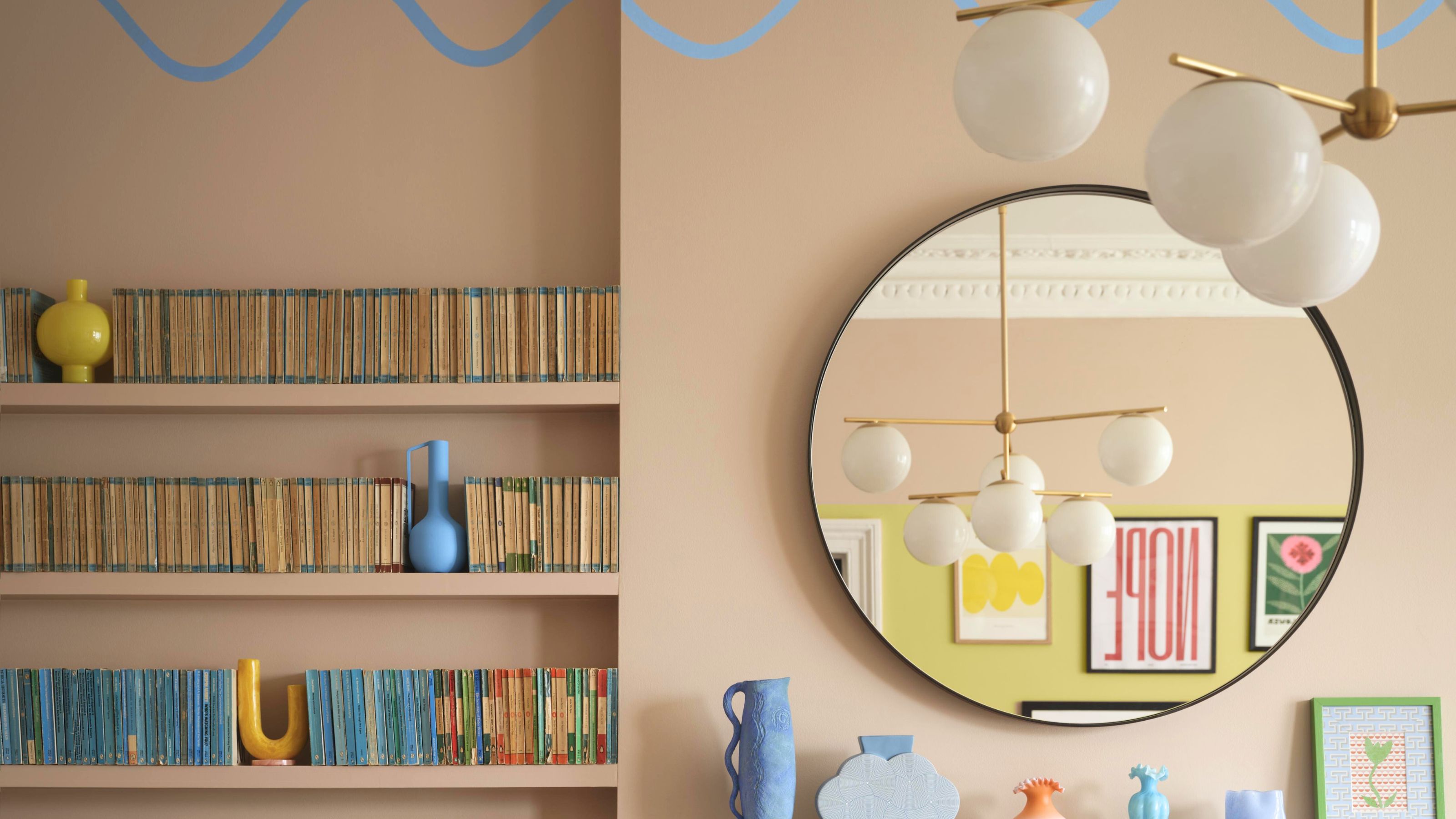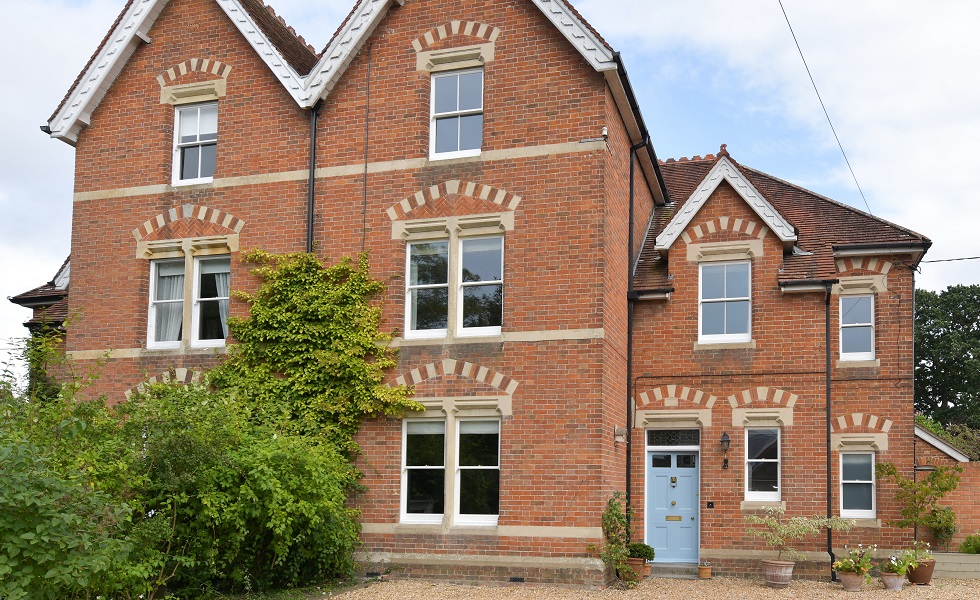
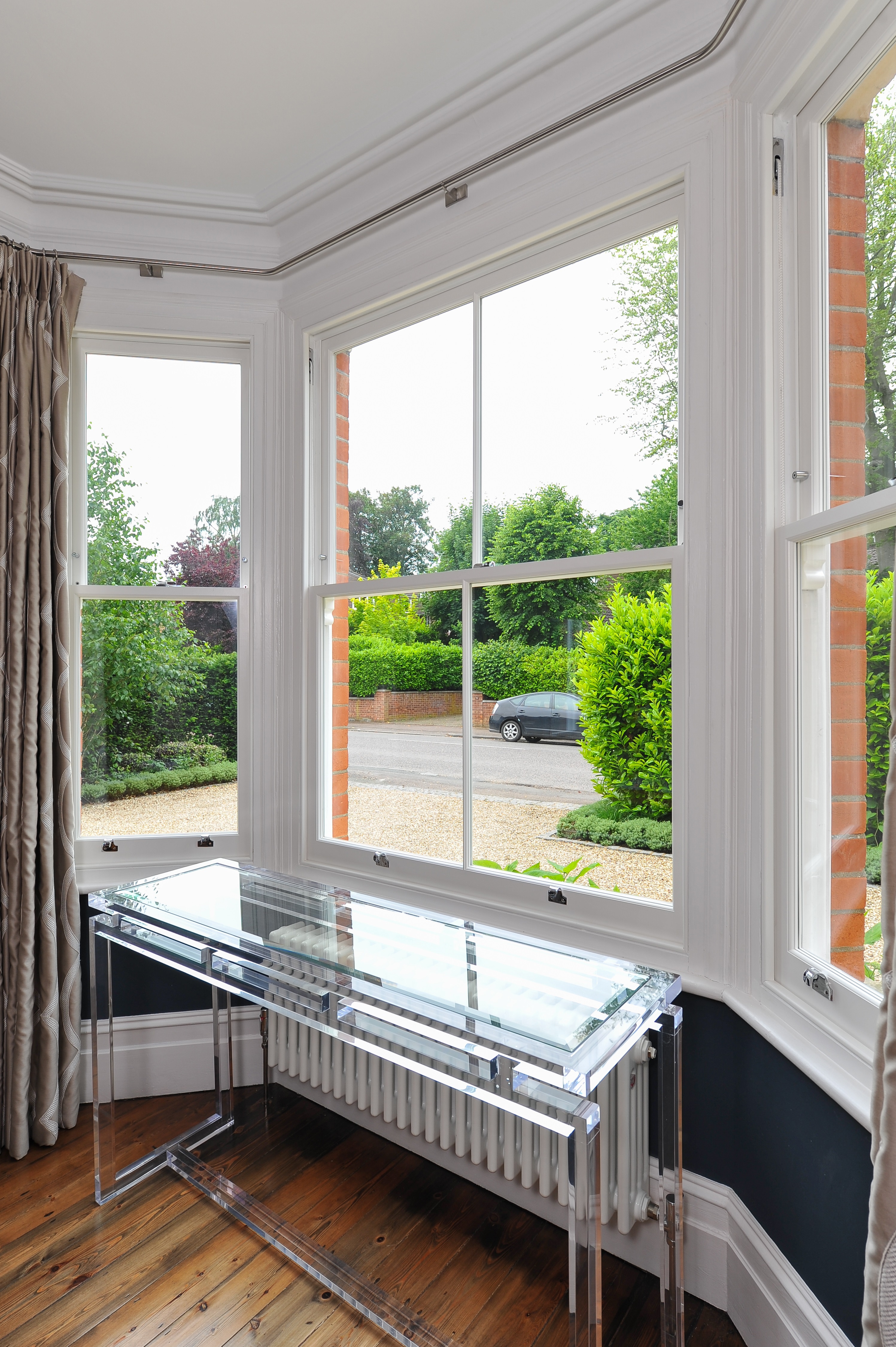
Cord hung bay sash window manufactured and installed by The Sash Window Workshop.
Cord Hung Sash Windows
Traditional, cord hung sash windows have been used across the UK since the mid-17th Century. They operate using pulleys, with cords and weights and have a deep frame which is normally set back behind the outside brickwork in a reveal.
Cord hung sash windows normally last longer than spiral hung sash windows as the operational parts of the window are more durable, meaning they can function for decades without any issues.
Vertical sliding sash windows will normally either have a fixed top sash and a moving bottom sash or can be double-hung, meaning that both sashes can be opened.
In the Georgian period it was common to have several glazing bars in the windows, as glass was expensive. However, in 1851, during the Victorian period, the window tax was removed, meaning more people could afford single pane windows.
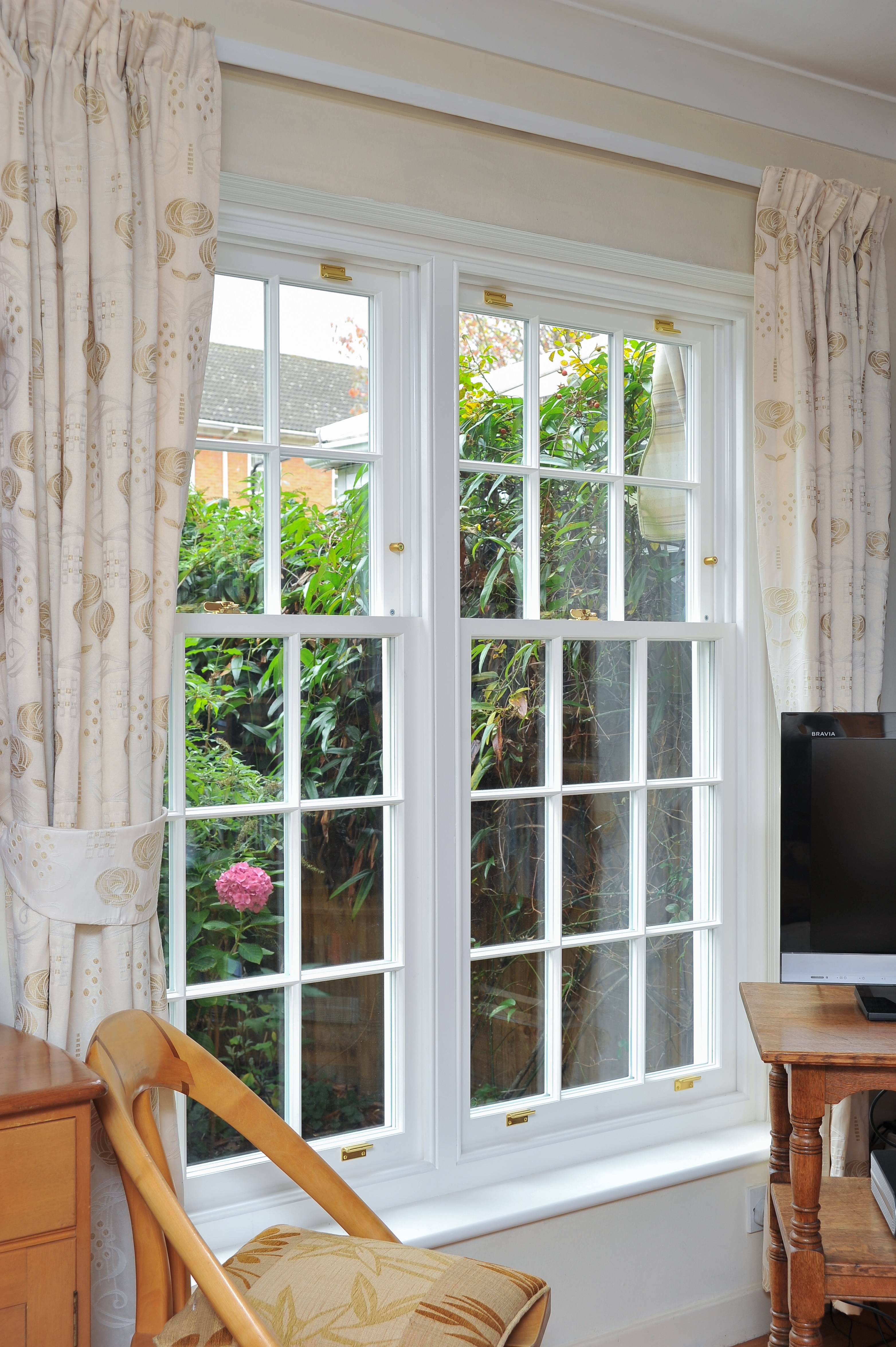
Spiral hung sash windows manufactured and installed by The Sash Window Workshop.
Spiral Hung Sash Windows
Spiral hung sash windows are a more modern invention, introduced from the 1930s. Unlike traditional cord hung sash windows, spiral hung sash windows are hung on mechanical springs. This means that they can have a narrower frame, allowing them to be installed in buildings that haven’t been designed to have cord hung sash windows.
Yorkshire Sash Windows
Yorkshire sash windows slide horizontally, rather than vertically. They were the predecessor of vertical sliding sash windows and although they are named Yorkshire sash windows, they can be found across the country. However, they are not very common in buildings today.
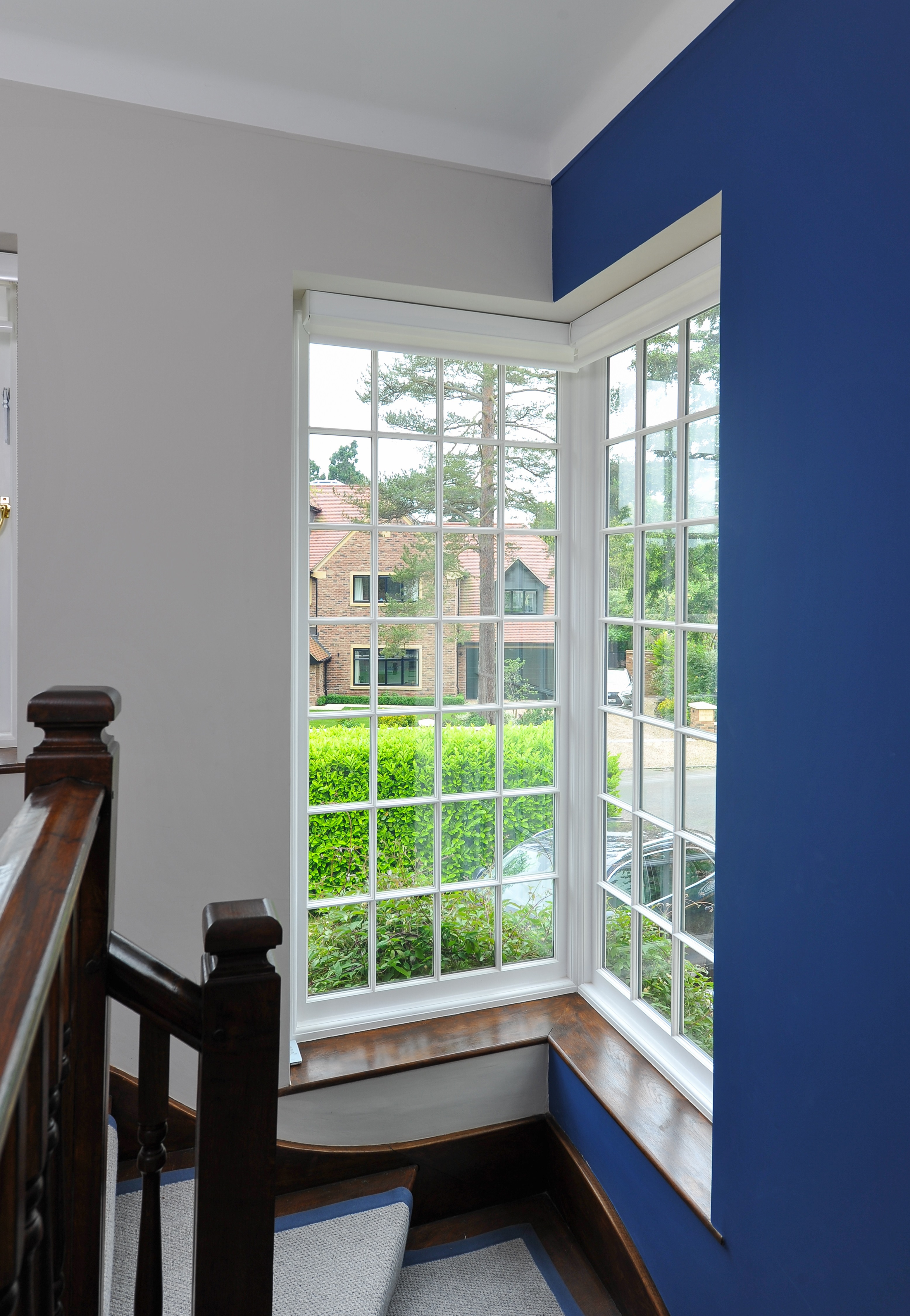
Fixed timber window manufactured and installed by The Sash Window Workshop.
Fixed Timber Windows
Fixed windows do not open. They can be designed either in the style of a casement window or a sash window and are a popular choice for feature windows or windows that are located next to a door, where the window should remain permanently shut for security issues.
Opening Casement Window
Wooden casement windows became popular in the UK from the 17th Century. Opening casement windows can be top hung, side hung, or centre pivoted. In the UK casement windows generally open outwards, whereas most continental windows open inwards.
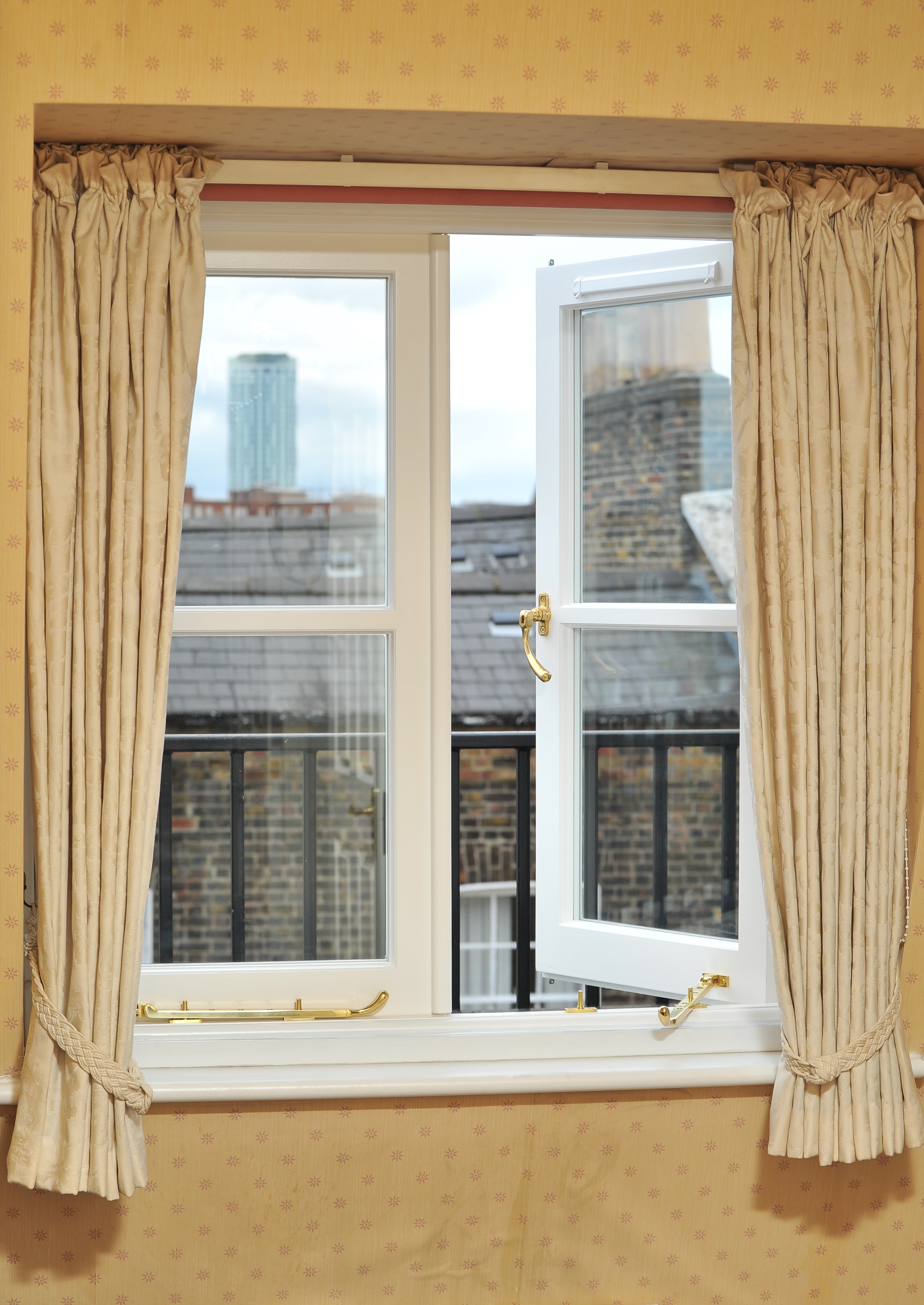
Timber casement window manufactured and installed by The Sash Window Workshop.
French Casement Window
Casement windows without central mullions are known as French casement windows. A mullion is a vertical section of the frame that creates a division between different parts of a window.
Replacing Your Timber Windows
If you are unsure what type of windows would suit your property, a specialist timber window company who has experience working on period properties should be able to advise you. Find out more about choosing the right timber windows for your home by clicking here.
It is worth noting that traditional timber windows need to be made to bespoke requirements. There is no such thing as a ‘standard’ traditional window. This is because all the windows would have been made by hand by craftsmen to suit the individual property.
When deciding which company to go ahead with, check whether the company has experience working on similar properties and that they can manufacture a replacement window to your exact requirements.
Useful Contact
The Sash Window Workshop was founded in 1994 and specialise in the replacement of timber windows in period properties. Where required, the company can comply to conservation area and listed building requirements.
For more information on The Sash Window Workshop’s replacement timber window service, and see examples of their work, visit: www.sashwindow.com.
Join our newsletter
Get small space home decor ideas, celeb inspiration, DIY tips and more, straight to your inbox!
Real Homes is the homes website for people with real lives, real budgets and real problems. Everyone deserves to love where they live and Real Homes is the ultimate homeware authority that makes this possible by covering realistic and achievable ways to make your home better. Expect easy DIYs, advice on costing and loads of interiors inspiration. Whether it is our first hand experiences, or finding an expert with the best know-how, everyone can find a project to suit their needs on Real Homes.
